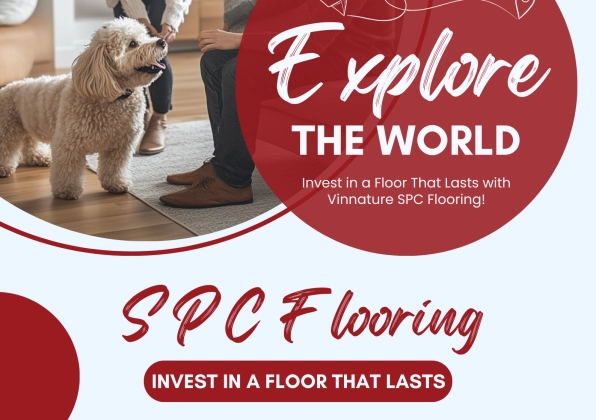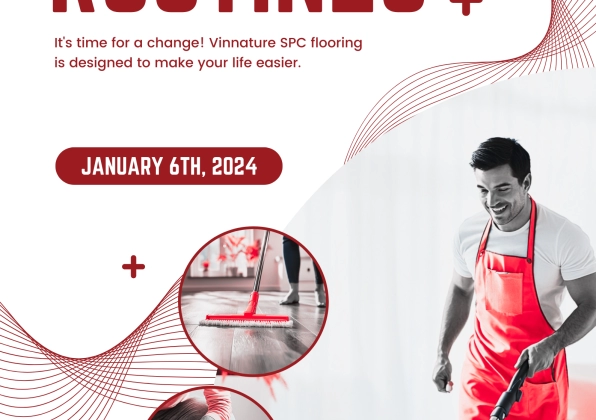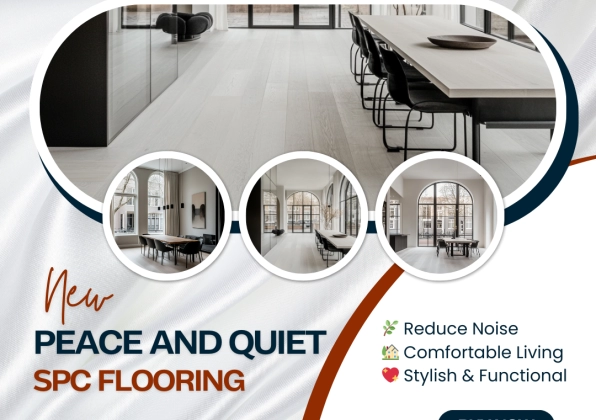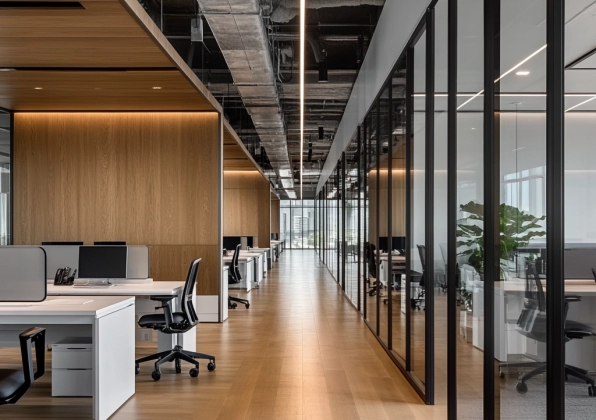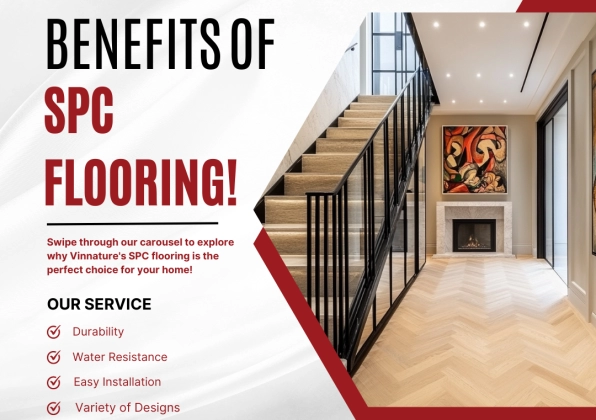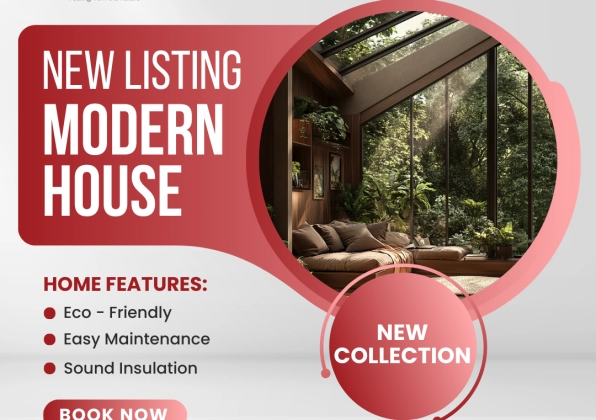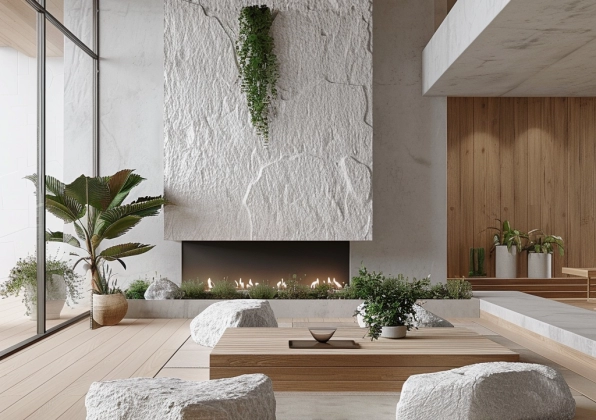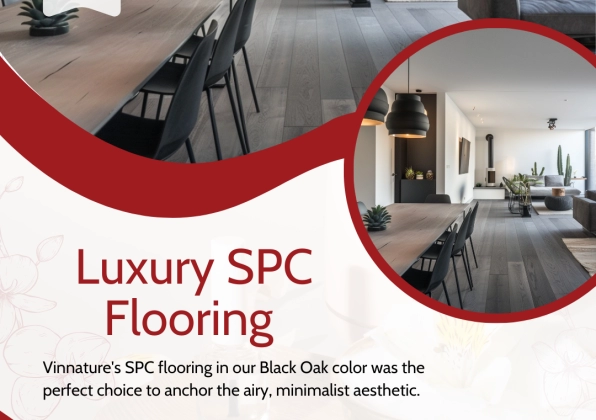When searching for the ideal flooring option for your home, you’ll come across various products that strike the balance between beauty and durability. Vinnature has three exceptional options that offer both aesthetics and long-lasting performance, including industrial laminate flooring, SPC flooring, and ceramic tiles.
I. Laminate Flooring
Industrial laminate flooring has become a popular alternative to natural hardwood flooring. It consists of multiple layers of synthetic materials fused through a thin, heat-press lamination process. Incorporating advanced manufacturing techniques and additives allows for diverse design patterns resembling hardwood, stone, or tile while providing enhanced durability and high wear resistance.
1. Construction of Laminate Flooring:
Laminate flooring comprises 4 primary layers:
- Wear Layer: Mostly made of aluminum oxide or melamine resin, the wear layer offers exceptional durability and resistance to wear and tear.
- Design Layer: The design layer features high-resolution images that replicate the look of real wood, stone, or other materials.
- Core Layer: The core layer, typically made of high-density fiberboard (HDF) or medium-density fiberboard (MDF), provides stability, strength, and impact resistance.
- Back Layer: The back layer consists of melamine or resin-treated paper, enhancing stability, moisture resistance, and reducing the risk of warping due to temperature fluctuations.
2. Features of Laminate Flooring
Advantages:
- Resistant water, making it suitable for humid environments, preventing damage and warping caused by moisture.
- Low maintenance costs with simple upkeep methods such as sweeping, vacuuming, and occasional damp mopping.
- Simplicity, high durability, and ease of installation, making it a preferred choice for industrial spaces.
Disadvantages:
- Limited direct exposure to sunlight and rain (outdoor spaces).
- Lacks fire resistance capabilities.
- Can only be replaced when scratched; repairs are not possible.
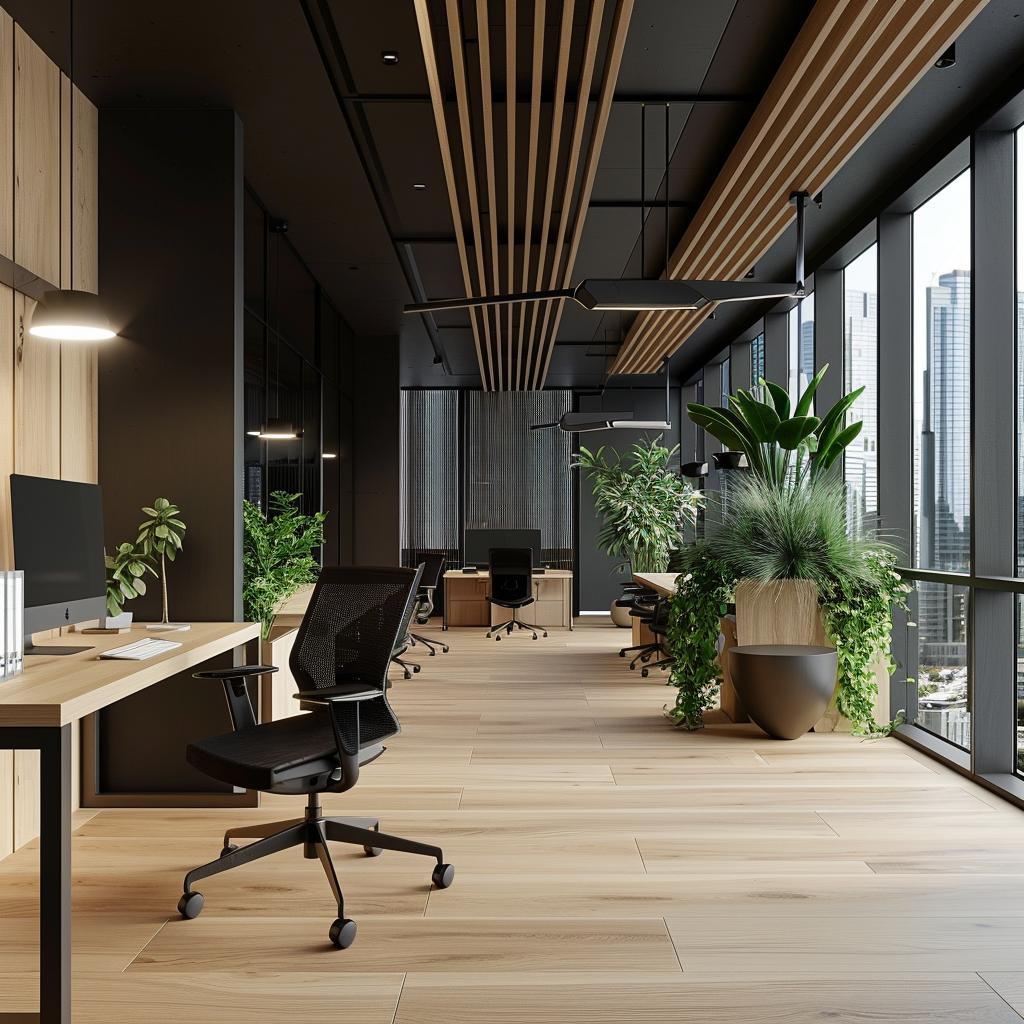
II. SPC Flooring
SPC Flooring, also known as Stone Plastic Composite or Rigid Core flooring, has become increasingly popular in recent years. It features a unique tongue and groove system for easy installation. Made from SPC material (PVC blended with limestone powder), this flooring is exceptionally strong, 100% waterproof, and offers numerous benefits.
1. The four primary layers of SPC flooring:
- Sole Layer (SPC Core/Rigid Core Broad): This layer, approximately 3-4mm thick, is typically composed of Polyvinyl Chloride (PVC) with added limestone powder and stabilizers. It provides the flooring with strength and durability, making it resistant to impacts and indentations.
- Film Layer (Decor): This layer showcases vivid and eye-catching patterns that can mimic the appearance of various materials like wood, stone, or tile. It adds a touch of aesthetics to the flooring, enhancing its visual appeal.
- Nano Layer: A thick, approximately 0.3mm, wear layer serves as a protective shield against scratches, ensuring the longevity of the printed film layer.
- UV Coating Layer: This transparent layer is evenly applied to the surface to reduce the harmful effects of UV rays, preventing fading, scratches, stains, and wear. It safeguards the flooring, maintaining its appearance over time.
2. Key Features of SPC Flooring
Advantages
- High durability and resistance to scratches, stains, and wear, make it suitable for high-foot-traffic residential and commercial spaces.
- Waterproof properties, making it an excellent choice for moisture-prone areas. It can withstand water damage and is less prone to warping or swelling compared to natural materials like hardwood.
- The SPC core layer provides exceptional stability, preventing expansion or contraction due to temperature and humidity changes.
- Easy installation with a click-and-lock or interlocking mechanism, eliminating the need for adhesives.
- Wide variety of designs, colors, and textures, allowing customers to choose from various aesthetic styles and match their interior decor preferences.
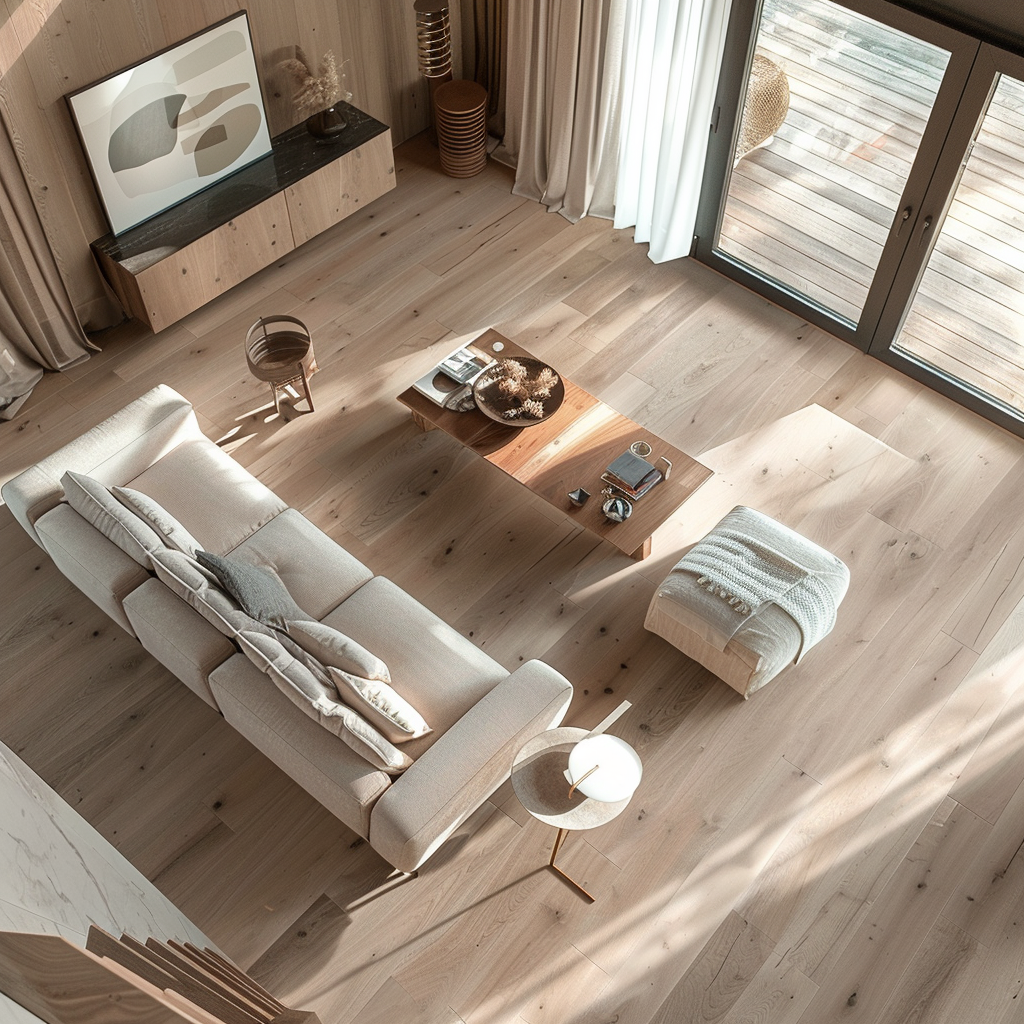
Disadvantages
- SPC flooring may fade if exposed to prolonged UV radiation. Avoid installing it in areas with direct sunlight.
- High temperatures can cause the flooring to expand and contract, potentially leading to buckling or warping
III. Ceramic tiles
Ceramic tiles are a popular flooring and wall covering material made from fired clay.
Advantages
- Water Resistance: Enjoy peace of mind with ceramic tiles’ excellent water resistance, making them perfect for moisture-prone areas like bathrooms, kitchens, and laundry rooms.
- Design Variety: With a wide range of colors, patterns, and sizes, ceramic tiles offer endless design possibilities, allowing you to create the perfect look for your interior.
- Easy to Clean: Ceramic tiles are non-porous, meaning they don’t absorb odors or harbor bacteria, making cleaning a breeze.
- Fire Resistance: Feel secure knowing that ceramic tiles are fire-resistant and won’t burn or emit toxic fumes when exposed to high temperatures.
Considerations
- Professional Installation: Proper installation is crucial for ceramic tiles, requiring skills and expertise to ensure a flat surface and proper adhesion.
- Impact Sensitivity: While durable, ceramic tiles can crack under heavy impacts, so handle heavy objects with care.
- Slippery Surface: Take precautions in wet areas as ceramic tiles can be slippery, posing a potential slipping hazard. Consider using textured tiles or slip-resistant coatings.
- Cost: Keep in mind that ceramic tiles can be relatively more expensive compared to other flooring options
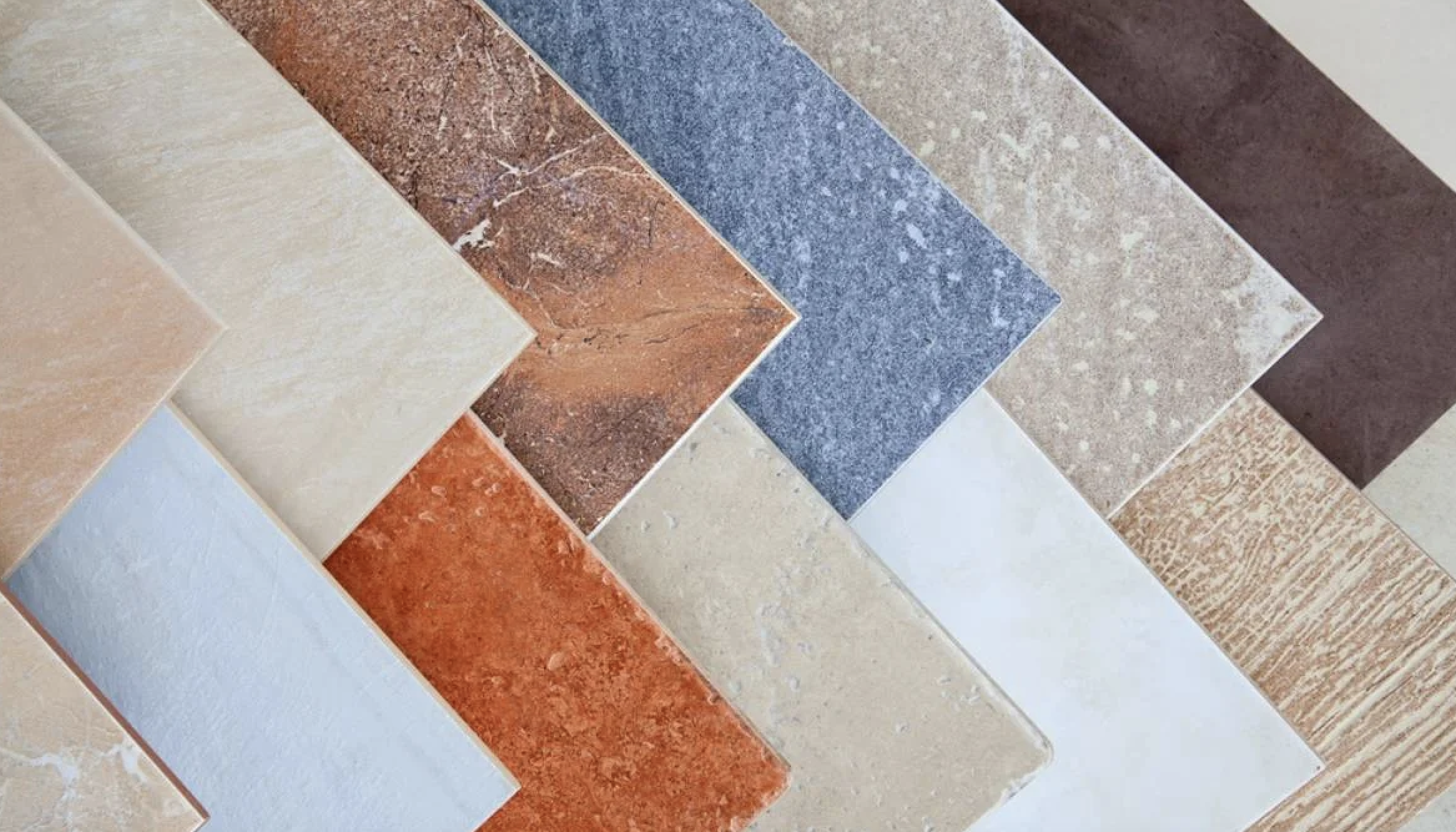
#SPCFlooring #FlooringInnovation #TileVsSPC #WaterproofFloors #InteriorDesign #EcoFriendlyLiving #DurableFlooring #HomeRenovation #ModernLiving #SPCAdvantages #EasyInstallation #LowMaintenance #CostEffective #VersatileDesign #ComfortUnderfoot #SustainableLiving #HomeImprovement #ResilientFloors

